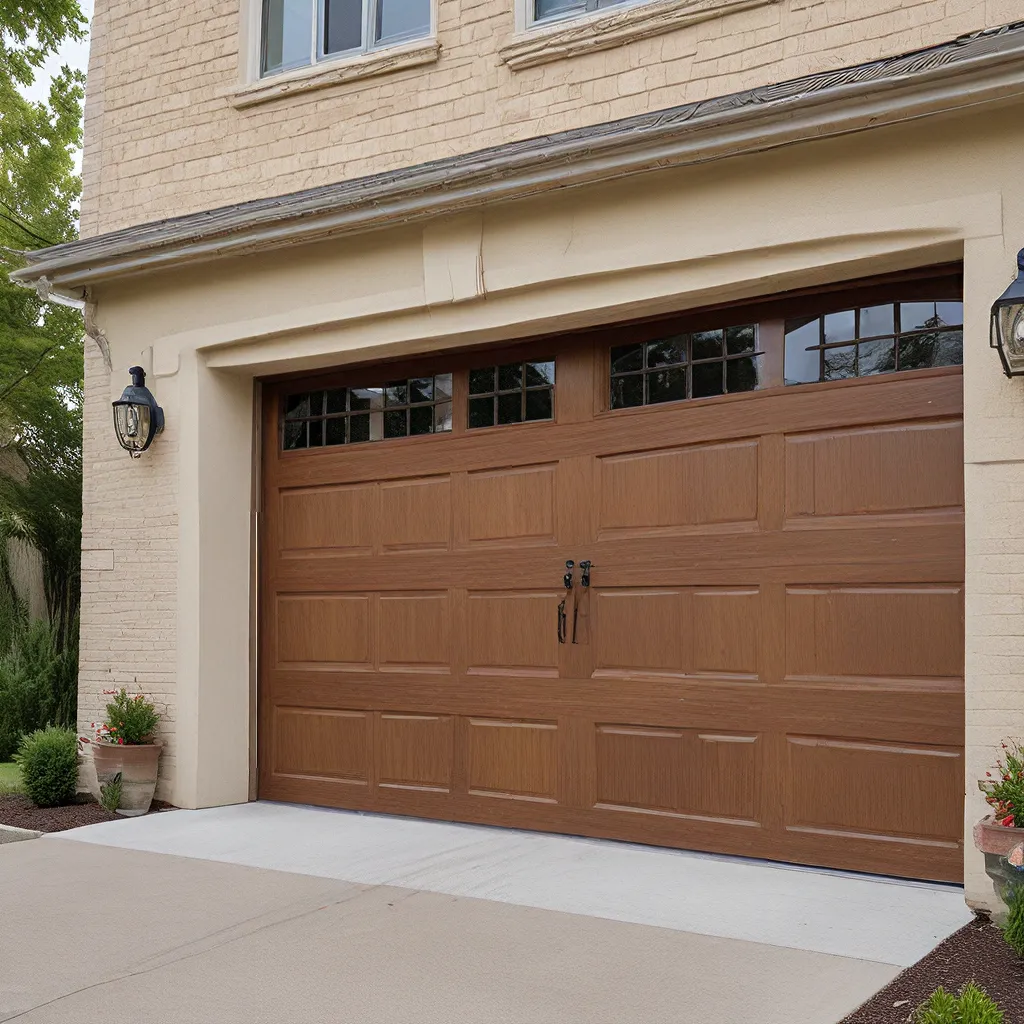
As a homeowner or property manager, the importance of a well-functioning garage door system cannot be overstated. Garage door sensors play a critical role in ensuring the safety and security of your property, and when they fail to operate correctly, it can be a significant inconvenience and a potential threat to your home or business.
Understanding Garage Door Sensor Functionality
Garage door sensors are designed to detect the presence of objects, such as vehicles or pedestrians, in the path of the closing garage door. These sensors are typically installed near the bottom of the garage door and work by transmitting an invisible beam of light across the opening. When the beam is broken, the sensors signal the garage door opener to immediately stop and reverse the door’s motion, preventing potential damage or injury.
Common Garage Door Sensor Issues
One of the most common problems homeowners and property managers face is a garage door sensor not responding. This issue can occur for a variety of reasons, including:
-
Battery Failure: Garage door sensors are powered by small batteries, which can eventually run out of charge. When the battery dies, the sensor will no longer be able to communicate with the garage door opener, causing the “sensor not responding” error.
-
Sensor Misalignment: Over time, the sensors can become misaligned, either due to physical disturbances or gradual shifting of the door’s components. When the sensors are not properly aligned, the light beam can be interrupted, leading to the same “sensor not responding” issue.
-
Electrical Interference: Nearby electrical devices, such as radios, televisions, or other wireless systems, can potentially interfere with the sensors’ signal, causing them to become unresponsive.
-
Sensor Malfunction: In some cases, the sensors themselves may simply stop functioning correctly due to a manufacturing defect or premature wear and tear.
Addressing Garage Door Sensor Issues
When faced with a garage door sensor not responding, it’s important to take a methodical approach to troubleshooting and resolving the problem. Here are some steps you can take:
Step 1: Check the Sensor Batteries
Start by inspecting the batteries in the garage door sensors. If the batteries are low or dead, replace them with fresh, name-brand batteries (such as Duracell or Energizer) to see if that resolves the issue.
Step 2: Realign the Sensors
Ensure that the sensors are properly aligned and that the light beam is unobstructed. Gently adjust the sensors’ positions, ensuring that they are parallel and facing each other, with the light beam passing directly between them.
Step 3: Identify Potential Interference Sources
Carefully examine the area around the garage door sensors for any potential sources of electrical interference, such as nearby wireless devices or appliances. Try temporarily relocating or turning off these devices to see if the sensor issue is resolved.
Step 4: Test the Sensors Individually
If the above steps don’t resolve the problem, you may need to test the sensors individually to determine if one of them is faulty. Disconnect the sensors, test them separately, and replace any non-functioning units.
Step 5: Seek Professional Assistance
If you’ve exhausted all troubleshooting efforts and the garage door sensor issue persists, it’s best to contact a professional door repair service for further assistance. They can perform a comprehensive inspection, diagnose the root cause, and provide a reliable solution to restore the safety and security of your garage door system.
Upgrading to Smart Garage Door Sensors
As technology continues to evolve, homeowners and property managers have the opportunity to upgrade their garage door systems with smart door sensors. These advanced sensors offer a range of benefits, including:
-
Improved Reliability: Smart sensors are designed with more robust communication protocols and advanced features that can help mitigate interference and connectivity issues.
-
Remote Monitoring: Many smart garage door sensors can be integrated with home automation systems or mobile apps, allowing you to monitor the status of your garage door and receive alerts in real-time, even when you’re away from the property.
-
Enhanced Safety and Security: Smart sensors often incorporate additional safety features, such as obstacle detection and automatic door reversal, to provide an added layer of protection for your home or business.
-
Increased Convenience: With smart sensors, you can remotely control and operate your garage door from your smartphone or other connected devices, eliminating the need for manual interaction.
When considering an upgrade to smart garage door sensors, it’s essential to research and compare the available options to ensure compatibility with your existing garage door opener and home automation systems.
Preventive Maintenance for Garage Door Sensors
To maintain the optimal performance and longevity of your garage door sensors, it’s recommended to follow a regular maintenance routine. This includes:
-
Periodic Battery Replacement: Replace the sensor batteries at least once a year, or as recommended by the manufacturer, to ensure uninterrupted operation.
-
Sensor Alignment Checks: Visually inspect the sensors and their alignment on a regular basis, making adjustments as needed to maintain a clear and unobstructed light beam.
-
Cleaning and Inspection: Regularly clean the sensor lenses and check for any signs of physical damage or wear and tear that may impact their functionality.
-
Professional Inspections: Consider scheduling annual or bi-annual inspections by a professional door repair service to identify and address any potential issues before they escalate.
By staying proactive with garage door sensor maintenance, you can help ensure the long-term reliability and safety of your garage door system, protecting your property and your loved ones.
Remember, if you encounter any persistent or complex issues with your garage door sensors, it’s always best to consult with a professional door repair service to ensure the problem is resolved correctly and safely.


